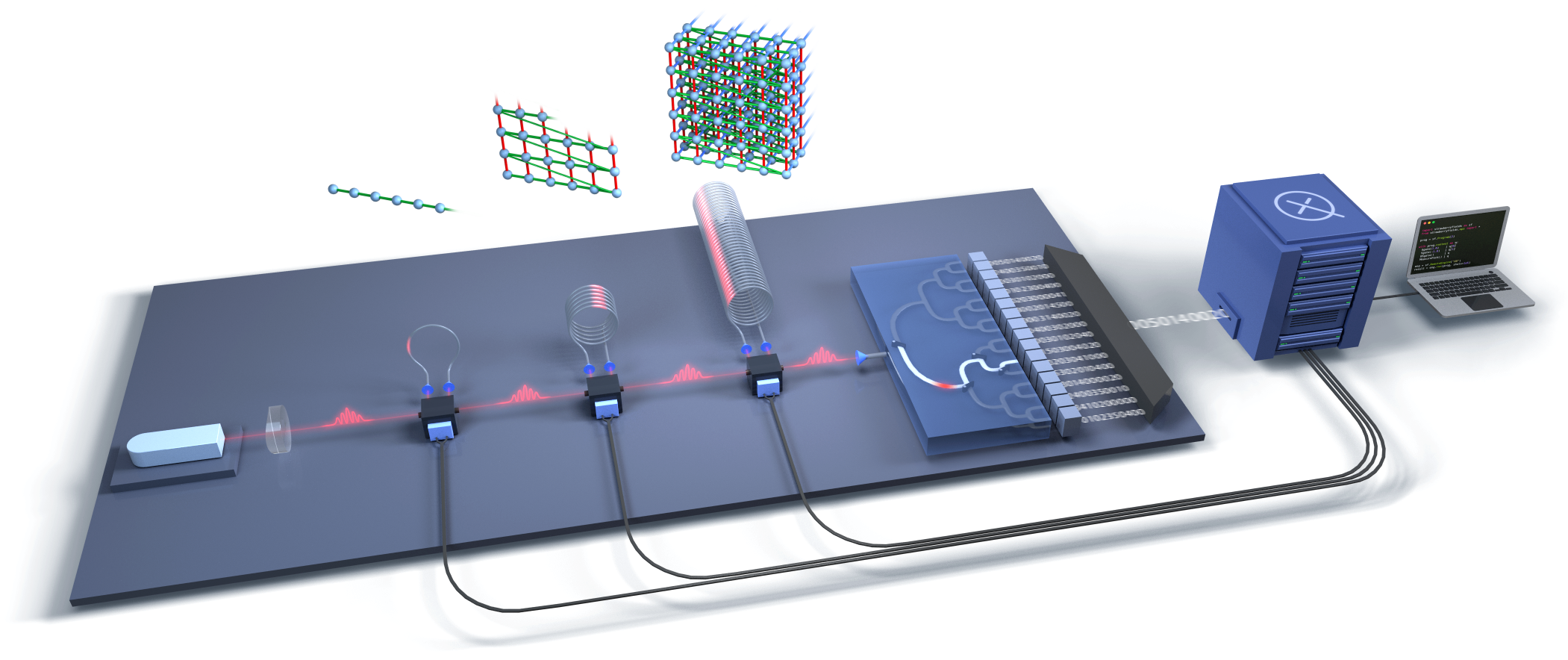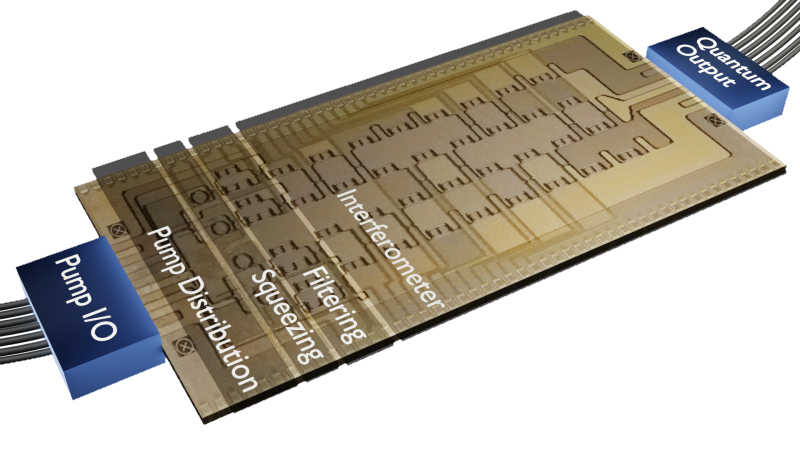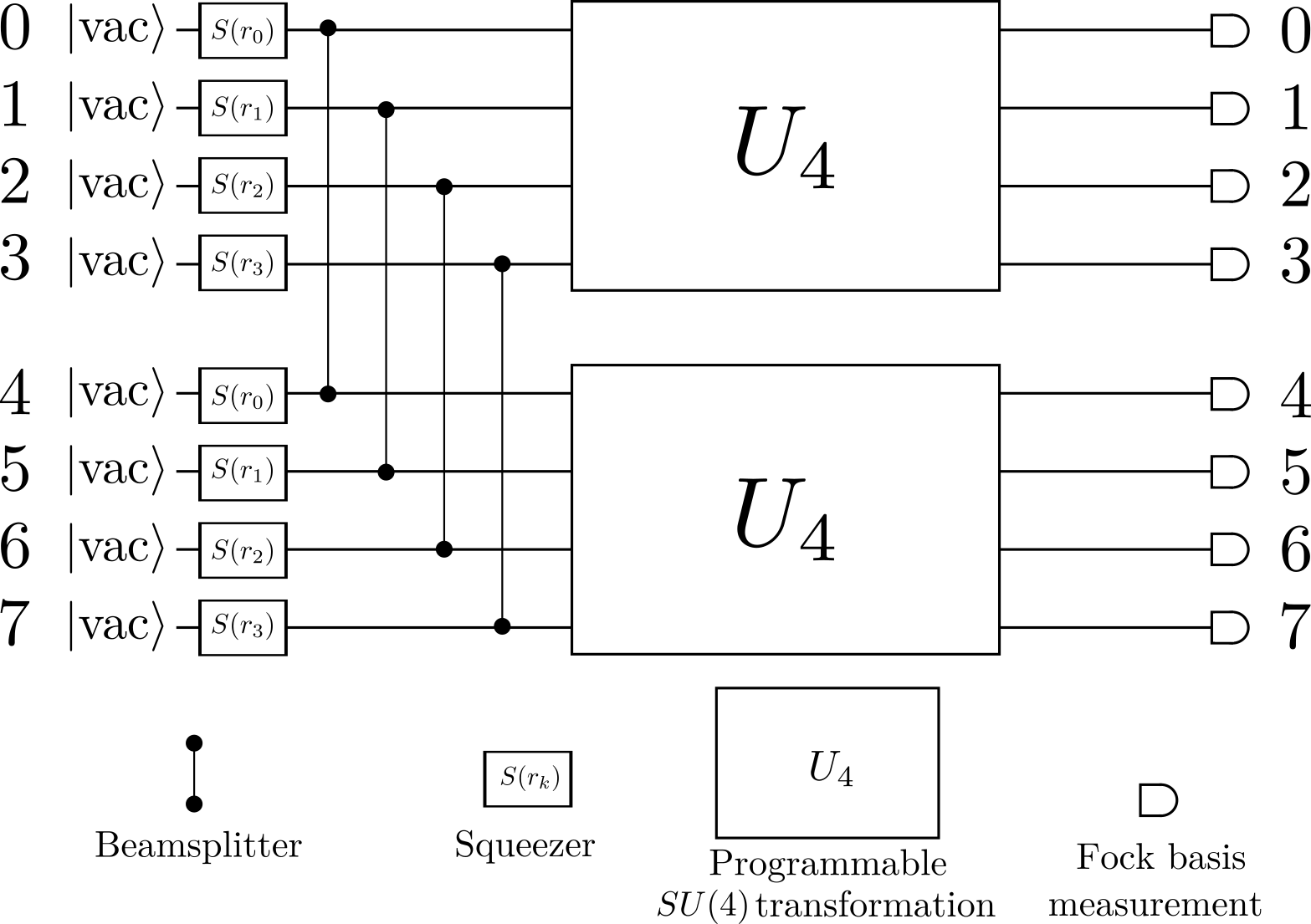Integrated quantum nanophotonics¶
What is photonic quantum computing?¶
Photonic quantum computers encode information in optical modes: independent beams of light that can be mathematically represented by quantum harmonic oscillators. Excitations of these modes are photons, which are the fundamental quanta of light.
Some photonic quantum computers use discrete numbers of photons to carry out computations in the traditional “discrete variable” or “qubit” model. Our Borealis and X8 architectures are very different in that they follow the “continuous variable” model; instead of using discrete numbers of photons, we use squeezed states, programmable linear optical transformations, and photon counting. In the near-term Noisy Intermediate-Scale Quantum (NISQ) era, this gives access to a very different set of problems than what is available using traditional discrete-variable machines.
For an overview of applications that near-term photonic quantum computers are well-suited for, see our Applications page.
Why quantum photonics?¶
In the future, when error correction, fault tolerance, and universality is achieved, all types of quantum computers will give access to the same types of algorithms. However, the photonic approach maintains some important technological advantages.
It is compatible with room-temperature operation—the Borealis and X8 chips do not require cooling (though the photon detectors still do require some cooling). This stands in contrast with the approach based on superconducting circuits, which will always require extremely cold temperatures.
Photonics enable the use of special multiplexing techniques to scale up the number of available qubits to the millions or billions that will eventually be needed. Borealis, our time-domain multiplexing chip, is an example of this.
Finally, using light to encode quantum information allows us to network quantum computers very easily; communicating between two chips is as simple as linking them by a conventional optical fiber.
Borealis Hardware details¶
The Borealis chip is based on time-domain multiplexing (TDM), which allows for a comparatively simple experimental setup in which the number of optical parts and devices is independent of the number of optical modes. In practice, this means that experiments can be scaled up in the number of entangled modes without needing to expand or change the physical setup.

3D rendering of the Borealis setup.¶
As detailed in the image above, the Borealis setup consists of a single spatial mode with three delay loops of different lengths. A squeezed-light source injects pulse trains of 216 temporally-spaced modes into the interferometer, passing through a rotation gate and a variable beamsplitter which forces the incoming mode to interfere with the outgoing mode.
To learn more about Borealis, check out our beginner’s Borealis tutorial, detailed advanced Borealis tutorial, blog post, or Nature paper.
X8 Hardware details¶
The X8 chip platform is based on nanophotonic silicon nitride waveguides. These chips are fabricated using the same type of lithographic technology used to make classical computer processors. The choice of chip-based platform was made not only for the sake of miniaturization and ease of manufacturing: encoding information on-chip also allows an extremely high level of control over and stability of the optical phases used to program algorithms in the device.

3D rendering of the X8 chip architecture, based on a micrograph of the actual device.¶
The above render shows the programmable X8 integrated nanophotonic chip. Put simply, the chip is powered by laser pulses injected into its left-hand side. It synthesizes a programmable quantum state that is then coupled out of the chip and sent to detectors for photon counting measurements.
We can break down this process into several distinct steps:
Input. Classical coherent state pulses from a laser are injected into the chip from optical fibers, and are coherently distributed to power four separate squeezer devices.
Squeezing. The squeezers, based on micro-ring resonators, each generate a two-mode squeezed vacuum (TMSV) state at their output waveguides. Squeezed states introduce quantum entanglement, and are a key quantum resource. The two modes in each of these four TMSV states correspond to distinct optical wavelengths, with each of the four copies generated in a separate spatial mode.
Filtering. A filtering stage separates the classical laser pump light from the squeezed light. The pump light is directed off-chip for monitoring.
Programmable linear interferometer. The squeezed light propagates into a programmable four-mode interferometer. The phases of the interferometer are specified directly from within Strawberry Fields when submitting the quantum job.
Measurement. The resultant eight-mode programmable Gaussian state is then coupled off-chip to photon number-resolving detectors for readout in the Fock basis.
We can illustrate the above process as a quantum circuit diagram:

Here, up to eight modes are squeezed, of which four pairs are entangled via a 50/50 beam splitter to form the two-mode squeezed vacuum states. We group the modes into two groups; we call modes 0 to 3 the signal modes and modes 4 to 7 the idler modes. Two-mode squeezing is between the pairs of modes: (0, 4), (1, 5), (2, 6), (3, 7).
A fully programmable arbitrary \(4\times 4\) unitary, consisting of Mach-Zehnder interferometers with variable phases, is then applied identically on both the signal and idler modes. Finally, each of the eight modes is read out individually by performing photon-counting measurements.
To learn how to program and submit jobs to our remote hardware using Strawberry Fields, check out our photonic hardware quickstart guide and detailed X8 tutorial.
Contents
Downloads
Related tutorials